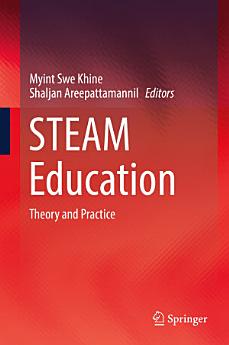STEAM Education: Theory and Practice
About this ebook
The notion of STEAM (Science, Technology, Engineering, Arts, and Mathematics) is an emerging discipline unique in its desire to provide a well-rounded approach to education. The chapters of this volume examine STEAM in a variety of settings, from kindergarten to higher education. Readers will learn about the practical considerations involved when introducing the arts and creativity into traditionally left brain processes. This includes best practices for creating and sustaining successful STEAM initiatives in any school, college, or university. For instance, one chapter discusses novel approaches to teach writing with the scientific method in order to help students better present their ideas.
The authors also detail how the arts can engage more diverse learners, including students who are not traditionally interested in STEM subjects. They provide three concrete examples of classroom-tested inquiries: designing a prosthetic arm for a child, making a paleontology investigation, and taking a closer look at the arts within roller coaster engineering. This book is an invaluable resource for teachers and teacher trainers, university faculty, researchers, and school administrators. It will also be of interest to science, mathematics, engineering, computer science, information technology, arts and design and technology teachers.
About the author
Dr Myint Swe Khine is a Professor and Chair of Assessment and Evaluation Centre, Emirates College for Advanced Education, United Arab Emirates and Adjunct Professor at the Science and Mathematics Education Centre, Curtin University, Perth, Australia. He obtained Master degrees from the University of Southern California, Los Angeles, USA and University of Surrey, Guildford, UK, and Doctor of Science Education from Curtin University, Australia. Before joining ECAE, he worked at the National Institute of Education, Nanyang Technological University in Singapore. He has published widely and edited books on science education. Recent book Visual-spatial Ability in STEM Education: Transforming Research into Practice (2017) is published by Springer in Switzerland.
Dr Shaljan Areepattamannil holds a Ph.D. in Education from Queen’s University at Kingston, Ontario, Canada. He is currently an Assistant Professor in the Division of Curriculum and Instructional Technology at Abu Dhabi Government’s Emirates College for Advanced Education (ECAE). Prior to joining ECAE, Dr Shaljan was a research scientist in the Office of Education Research and an Assistant Professor in the Division of Curriculum, Teaching and Learning at the National Institute of Education, Nanyang Technological University, Singapore. Previously, he served as a teaching fellow in quantitative methods in the Faculty of Education at Queen’s University. His research interests primarily revolve around the role of psychology in STEAM education.







